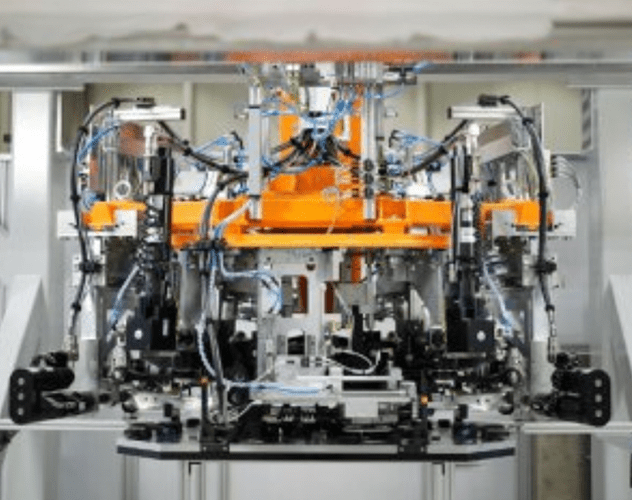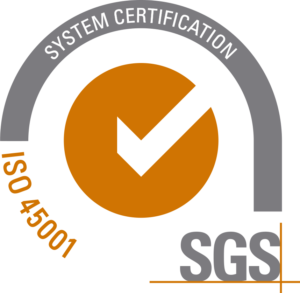EL SERVIDOR INTEGRADO OPC UA DEL SERVOAMPLIFICADOR SD3 DE SIEB & MEYER OFRECE UNA PLATAFORMA ORIENTADA AL FUTURO PARA ADMITIR TEMAS TALES COMO INDUSTRY 4.0 O IOT.
The integrated OPC UA server of the servo amplifier SD3 by SIEB & MEYER offers a future-oriented platform to support topics such as Industry 4.0 or IoT
Anytime, anywhere: The new control generation by AMT enables great freedom and can be operated anytime from anywhere. The access to the control system is established via a network connection and a mobile terminal such as a tablet or a smartphone. Programming, troubleshooting and maintenance – all this performed independent of time and place. The implemented servo amplifier SD3 by SIEB & MEYER greatly contributes to this Industry 4.0 capability.
Digitalization in production is progressing fast. Keywords such as networking, M2M communication, predictive maintenance, automation and big data are the focus of the current debate. The goal: A smart factory with an intelligent, independent, flexible and efficient production process. Industry 4.0, the fourth industrial revolution, provides vast possibilities, but also puts high requirements on technology.
Due to the rapidly increased demand in rationalization and automation for modern production machines and systems, the requirements for efficient servo amplifiers have also changed significantly. The trend is to integrate more and more functions. In the field of tightening systems, the classic systems operated pneumatically or hydraulically are more and more replaced by servo motor driven systems. The advantages of these systems are their adjustable process design, precise process monitoring and documentation, as well as a purely electrical power supply.
Servo amplifier SD3 by SIEB & MEYER: Ready for Industry 4.0
SIEB & MEYER follows this trend and has developed a special solution for complex drive tasks such as high-dynamic positioning applications or tightening and press applications by servo motors. Beside an open system architecture that can accomplish almost all control, drive and visualizing tasks, SD3 users benefit from a wide range of additional services with high value added. The customer can use the open software architecture and the extensive function libraries to program application solutions for his core area by himself, e.g. in C/C+++ and thus protect his know-how. The support of an OPC UA-based communication provides the basis for Industry 4.0.
“With our servo amplifier users stay flexible,” says Torsten Blankenburg, CTO of SIEB & MEYER AG. “The application offers an open solution for customer-provided software making it optimal for Industry 4.0 projects.” In addition, various software functions for user interfaces, statistics, camera integration, communication, data storage and an integrated web server are available. Hardware solutions with power output stages up to 55 kVA are available. Option modules allow flexible integration of different fieldbus interfaces as well as additional digital and analog interfaces.
Network compatibility and individual adjustment – convincing arguments for AMT
The Industry 4.0 capability convinced Alfing Montagetechnik GmbH (AMT) from Aalen, Germany. The leading specialist for tightening technology, assembly systems and automation has already been working with SIEB & MEYER for more than 30 years. Again, AMT puts its trust in the expertise of the Lueneburg-based engineers and equips its new control generation with the servo amplifier SD3. “The network capability of SD3 played a crucial role,” Thomas Zeller, R & D Manager for tightening technology at AMT, explains. “Another important factor was the concept to run our own applications for control-specific functions of the tightening system.”
Already in the design phase, SIEB & MEYER worked closely with AMT to ensure that the company’s specific requirements regarding tightening technology were implemented in the development. Hence, the hardware of the device purchased by AMT was customized concerning interfaces and type of construction. The operating system of the device was enhanced by a real-time area amongst other. Thus, time-critical control functions such as the control of the tightening process can be integrated as a plug-in into the SIEB & MEYER software. Access to drive-specific functions is granted by an intrasystem interface. However, less time-critical functions can be implemented by means of additional applications run in the non-real-time area of the operating system. “The efficiency of the hardware and software enables us to meet a large number of customer requirements with AMT’s standard device,” says Thomas Zeller in respect to possible adjustments of SD3. “Hardware enhancements or an additional control computer are only need in special cases. The standard range of interfaces was adjusted in order to connect a large number of peripherals.”
Fivefold power
The customized SD3 for AMT is used for the new nutrunners generation of the series SX. This includes the following: handheld nutrunners HSX/PSX, fixture nutrunners ESX and the compact fixture nutrunners KSX. AMT developed five different control variants based on SD3: SMX100C (switch cabinet cassette by SIEB & MEYER), SMX100 (single-channel control with LEDs and a 7-segment display), SMX200 (single-channel control with a 7“ touch display), SMX300 (single-channel control with an integrated PC and a 6.5“ touch display) as well as SMX400 (single-channel control with an integrated PC and a 10.4“ touch display). The new tightening control software by AMT also features a web server for visualization, parameterization and diagnosis. In 2016, the Department for Economics of the German state Baden-Württemberg awarded AMT’s concept in the course of the competition Allianz 4.0.
The servo amplifier SD3 is responsible for the cyclic, serial communication with the nutrunners’ integrated tool electronics and for all drive and control functions. Moreover, the SIEB & MEYER software also includes functions such as monitoring and diagnosis for drive components and performance parameters. SD3 enables access to hardware components such as I/O and other interfaces. The customized software accesses the interfaces via intrasystem interfaces. Furthermore, the device provides safety functions.
The AMT variant of the servo amplifier SD3 is used as secondary device for multi-purpose tightening systems and as primary device or single channel controls. Therefore, the Ethernet interface was realized as a 2-port switch. The majority of the nutrunners should be operated with the same control type. Hence, a single-phase power supply was required. Only very powerful nutrunners capable of high torques require a three-phase power supply. The device had to be available as a space-saving switch cabinet module and as a built-in device for single-channel controls. “In order to meet these requirements SIEB & MEYER created a basic device available in two different variants,” explains Zeller. “SIEB & MEYER installs the switch cabinet module in a metal housing and the single-channel variant comes as a built-in device without a housing.” Additionally, SIEB & MEYER obtained the NRTL certification for the US market.
Direct communication of the control sytem with mobile terminals
The Industry 4.0 capability of AMT’s tightening systems is in large part due to the hardware concept of the servo amplifier SD3 with its standard Ethernet interface and its operating system. Combined with AMT’s integrated web server, remote access to the control can be provided via any browser-enabled terminal such as tablets, smartphones or PCs. Thanks to the Ethernet interface the tightening controls can be directly integrated into the customers’ production networks. Customer concepts often provide a direct connection between the tightening control and the assembly master control. Target data are transferred vehicle-related.
If the control system is additionally connected to the customer’s fault monitoring system, the warning and fault messages can be directly transmitted to the control. By means of an integrated maintenance counter, the system is able to report if the tightening system needs maintenance. If a warning or a fault message occurs, the maintenance staff can access the system via any browser-enabled device and does not need special visualization software. Hence, the staff can carry out a first fault diagnosis without being on-site or at a PC workstation.
SIEB & MEYER’s servo amplifier SD3 and its benefits such as network capability, flexibility, customized interfaces and functions provide a powerful and individual solution for Industry 4.0 applications. Thomas Zeller is satisfied with both the SD3 performance and the customer-oriented working method by SIEB & MEYER, “The cooperation was great. This applies to the sales and the development department. We were brought in the conceptual design phase very early and could integrate our individual requirements.”






